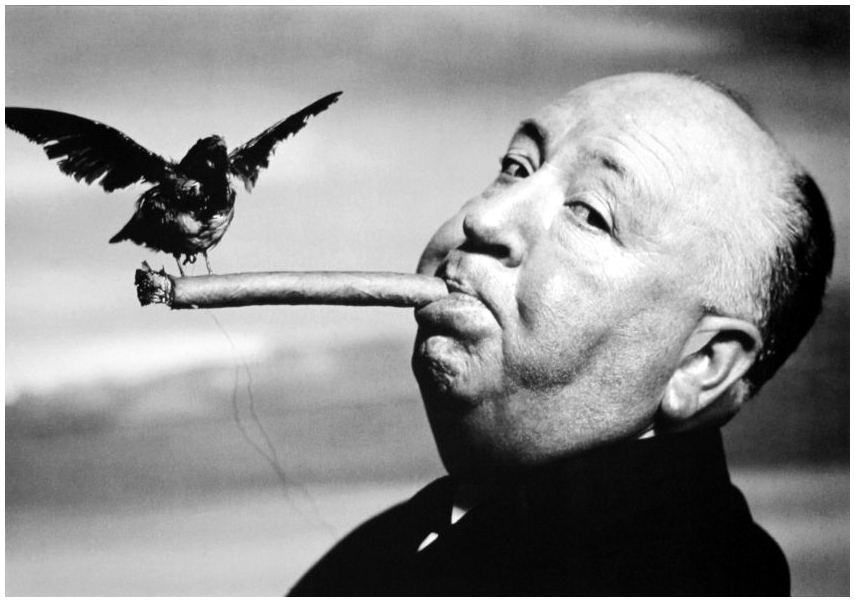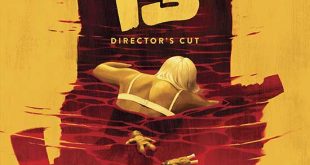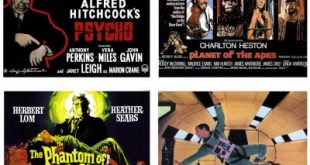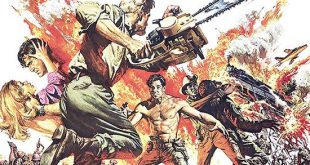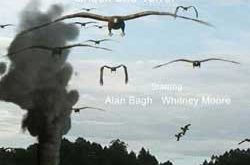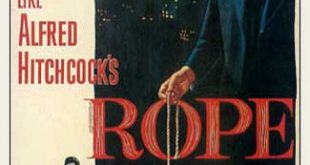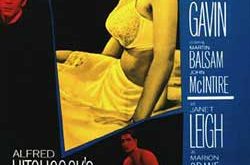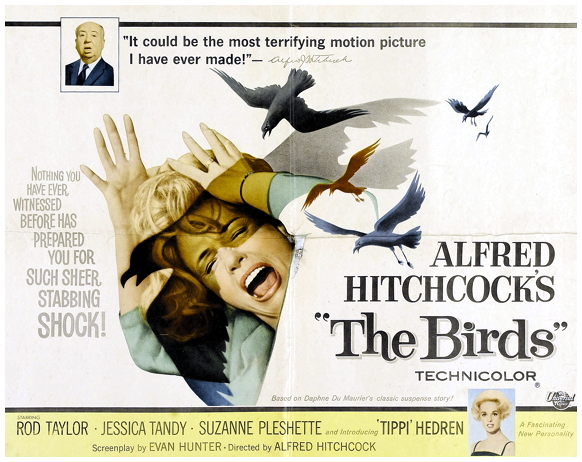 SYNOPSIS:
SYNOPSIS:
“Melanie Daniels is the modern rich socialite, part of the jet-set who always gets what she wants. When lawyer Mitch Brenner sees her in a pet shop, he plays something of a practical joke on her, and she decides to return the favor. She drives about an hour north of San Francisco to Bodega Bay, where Mitch spends the weekends with his mother Lydia and younger sister Cathy. Soon after her arrival, however, the birds in the area begin to act strangely. A seagull attacks Melanie as she is crossing the bay in a small boat, and then, Lydia finds her neighbor dead, obviously the victim of a bird attack. Soon, birds in the hundreds and thousands are attacking anyone they find out of doors. There is no explanation as to why this might be happening, and as the birds continue their vicious attacks, survival becomes the priority.” (courtesy IMDB)
REVIEW:
Alfred Hitchcock began his film career in 1920 as a designer of silent film title cards, soon becoming art director, scriptwriter, and director. After nine silent films including The Lodger (1927) and The Ring (1927), he directed the first British sound film, Blackmail (1929), followed by a number of superb thrillers: The Man Who Knew Too Much (1934), The Thirty-Nine Steps (1934), Young Innocent (1937) and The Lady Vanishes (1938). He was then invited to America by producer David O. Selznick to make Rebecca (1940) and stayed in the USA for most of his life. Hitchcock became the complete filmmaker, an auteur to whom no aspect of the filmic structure is a mystery. Every image that appears on screen has been calculated precisely, from the screenplay and photographic composition to the editing and soundtrack. Even the marketing of the finished product was a major part of Hitchcock’s concern, and the gleam in his eye is that of a born showman. His name is known to almost every person who has ever entered a cinema and his personality is more familiar to us than those of his many major stars.
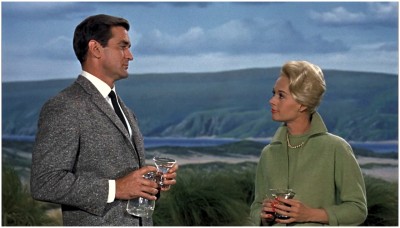
pMany of Hitchcock’s films can be regarded as horror movies of the mind, delving into the disturbed psyches of his characters, from Jack The Ripper in The Lodger to the necktie strangler of Frenzy (1972), but it was in the sixties when he directed his only bona fide fantasy film. There was a break in his output following Psycho (1960), as he was well over sixty years old at the time and heavily engaged with his anthology television series Alfred Hitchcock Presents, which had viewers throughout the world. Finding a subject for a new film took time. Eventually, it turned out to be a story by Daphne Du Maurier, who had already furnished Hitchcock with two stories. The Birds (1963) was, however, very different from either Jamaica Inn (1939) or Rebecca and considerable technical problems had to be surmounted in order to transfer the novella from the printed page to the silver screen. The Birds describes an ecological nightmare, a massive shift in the balance of nature which occurs when, for some unspecified reason, the world’s bird population turns against humankind. Hitchcock transferred the setting from England to Northern California and compressed the action into just a few days.
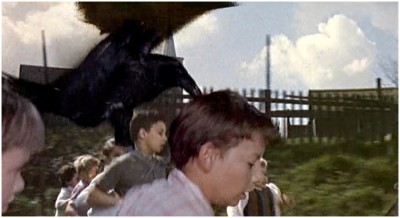
His main characters are an arrogant rich girl (Tippi Hedren) accustomed to getting what she wants whenever she asks for it, and a sharp young lawyer (Rod Taylor) who, in the opening scene set in downtown San Francisco, pretends to be a shop assistant in a pet store and scores several points off her. Flushed with the spirit of revenge and a certain interest in his confidence, the girl discreetly follows him to his weekend lair, the home of his mother (Jessica Tandy) in a country fishing village known as Bodega Bay, some miles north of the city. She drives up there ready to develop the relationship but, on her way to the house, she is attacked by a seagull leaving a cut on her head.

It’s not long before the residents of Bodega Bay begin to experience disquieting unrest among the bird population. These are not birds of prey that are behaving in an aggressive manner, but more common species such as seagulls, crows, and swallows. A children’s party is brought to an abrupt end by a concerted bird strike and, later, they erupt in startling numbers through every window opening, even the chimney. The next morning it is discovered that an isolated farmhouse has been laid waste by the birds and the farmer killed. The children are chased from the village school and soon the entire community is under siege from a gull strike during which a petrol station blows up, reducing the main street to a chaotic shambles. The schoolmistress (Suzanne Pleshette) who had been in love with the lawyer is found dead, and the sophisticated girl from San Francisco is savaged by an attic full of birds. Unhinged by the experience, she is gently helped away from the surrounded house by the lawyer and his mother, the birds quietly watching, enigmatically allowing our heroes to drive away through a desolate landscape dominated by the feathered monsters.
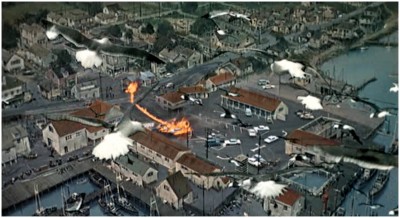
There is a telling scene in the village restaurant when an ornithologist (Ethel Griffies) – who just happens to be there after the schoolchildren have been attacked – rejects the notion of birds becoming aggressive because it goes against their nature, and is later forced to eat her words when the restaurant is besieged by seagulls, with a grandstand view of the destruction outside. In the same scene a frightened mother blames the rich girl, accusing her of witchcraft and making all the terrible things happen simply by being in the village. It’s certainly true that she’s suffering guilt from her awakening and sudden maturity, leaving her frivolous and useless former existence as a playgirl and socialite behind.
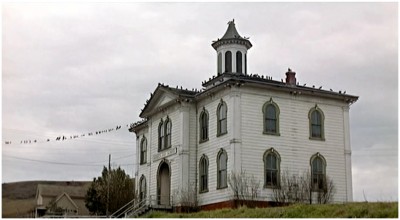
It is a parable expressing Hitchcock’s frequently voiced contention that it is the ordinary things around us where menace and danger lurk, perhaps even our ultimate destruction. Never before has he come so close to portraying the ultimate cataclysm, the annihilation of the world by uncontrollable forces. It is one of his most stunning films, both in story development – from light-hearted sophisticated comedy to the final horror – and in the technical ingenuity which went into the organisation of the special effects, with unusually complicated mattes, a lot of patient bird-training, and considerable fortitude on the part of the actors.
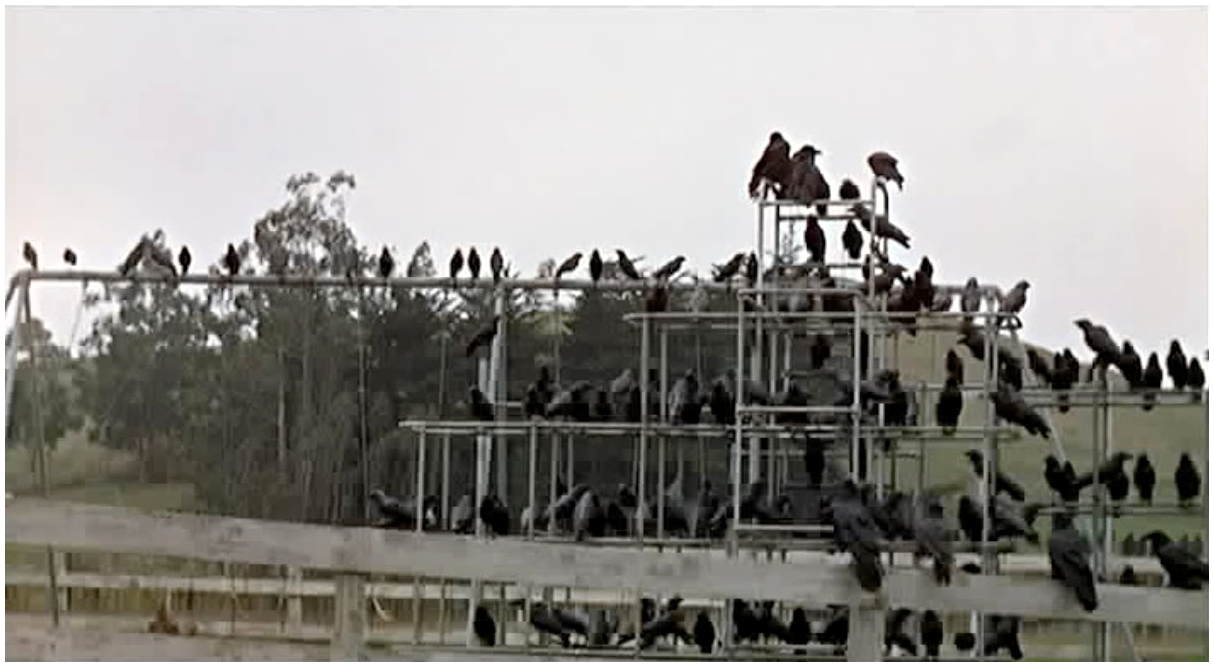
Hitchcock was a filmmaker who experimented. For instance, with Hollywood’s biggest budgets and studios at his disposal, he chose to make Psycho in black-and-white with a television crew, a relatively unknown cast and kill his leading lady midway. With The Birds he challenged himself again by deliberately choosing a project that had no real story, no ending, no music soundtrack (instead, Bernard Herrmann supervised the sound design using synthesisers to create the cacophony of attacking birds) and using less-than-top-shelf actors. Australian-born Rod Taylor – most recently seen as Winston Churchill in Inglourious Basterds (2009) – is a poor-man’s Cary Grant, and Tippi Hedren is a tall elegant blonde with a passive face, a former model with very little acting experience. The blandness of the two leads was to some extent mitigated by the casting of Jessica Tandy as the mother and Suzanne Pleshette as the schoolmistress, but it is quite evident that the director’s main interest lies with the birds and, like Stanley Kubrick’s 2001: A Space Odyssey (1968), the human characters are deliberately empty and superficial.
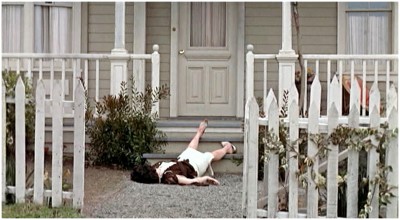
Alfred Hitchcock made his name in the film industry at an early age, and he kept it, increasing his stature as a filmmaker as the years went on. The perfectionism and skill coupled with his monumental cinematic imagination have brought a lasting contribution to the art of film and, although his genius has been rejected on the absurd grounds that too many people enjoy his work on an uncritical level, his contribution to the enrichment of humankind cannot be denied. That was always his intention – to entertain the widest audience possible. And with that thought in mind I’ll thank you for reading, and please join me next week when I have another opportunity to present you with more unthinkable realities and unbelievable factoids of the darkest days of cinema, exposing the most daring shriek-and-shudder shock sensations to ever be found in the steaming cesspit known as…Horror News! Toodles!
 Horror News | HNN Official Site | Horror Movies,Trailers, Reviews
Horror News | HNN Official Site | Horror Movies,Trailers, Reviews
